Indie Metroidvania Freemium eSports Roguelikelike MOBA Early Access Microtransactions Candy Saga
By Mento 19 Comments
(Disclaimer the first: I apologize for the title. This blog was originally entitled "Indie Metroidvanias" but something about that combination of annoyingly prevalent video gaming-derived neologisms must have set off something deep in the ol' psyche and caused me to go fugue for a moment. Just so we're all copacetic: we're only expounding on the first two words in that list.)
(Disclaimer the second: In an effort to curb the further proliferation of a term no-one seems to like but everyone instantly comprehends, I'll be calling this type of exploratory platformer action game "SpaceWhippers" going forward, regardless of whether or not it actually has whips or is set in space. It's equally stupid terminology, if not more so, but since it has yet to take off to the same omnipresent extent it should therefore be easier for us all to cope with. You all brought this on yourselves by complaining about the term in discussion. You made this happen.)
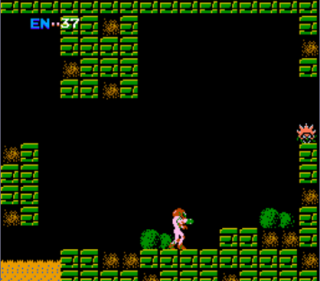
Indie SpaceWhippers are perhaps the most prolific genre of Indie games after the more puzzley-oriented platformers like Braid or The Swapper, and those strategy types where you defend places with towers in a tower defense-y sort of way. The reason for this is fairly self-evident, and is also the reason why there's so many Indie horror games bumping around (in the night): major studios no longer give a shit about them, but it's clear that a huge audience of us still do. You'd be hard-pressed to find any game with this specific make-up from any larger studio made within, say, the past five years. I mean, we had that Order of Ecclesia DS Castlevania, and Shadow Complex had a bunch of people behind it, but for those jonesing for a big map of collectibles and power-ups behind arbitrary barriers that can only be destroyed long after you first come across them, the Indie market was pretty much the only place to go. And the Indie market was in turn, as always, eager to please (as long as it's a 2D platformer if you wouldn't mind, because those are relatively easy to put together).
I love SpaceWhippers. Can't get enough of 'em. However, they're deceptively difficult games to get right: there's a lot of hidden design rules that need to be obeyed, more so than perhaps in most other genres due to how specific the SpaceWhipper formula can be. I wrote a little while back that the actual specifications of a SpaceWhipper (I might have referred to it by its inferior former name at the time) could do with being a bit more broader for the sake of accessibility, but there's still a huge number of considerations that need to be properly addressed before a game of this type can really start to coalesce into something respectable. Most of these involve what you can and can't do within the formula, and that's where a few of these Indie games can trip over their own feet in their enthusiasm for the format. At the same time, it's in bucking these laws that many Indie SpaceWhippers can break the mold in some really exciting ways.
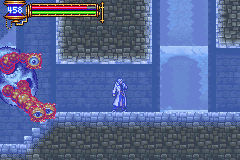
I'll be covering this and a few other Indie SpaceWhipper games in more detail below, but Valdis Story: Abyssal City - which I completed this week - was one example where the studio behind it had clearly played a fair number of games in this genre, but still made broke quite a few unwritten rules of the format. They trapped collectibles in an area which permanently seals itself off after you've done what you needed to in there (not much of a spoiler, but there was a load-bearing boss down there). They weren't as transparent about completion % as they perhaps could be. The transportation system was very limited, which meant a lot more tiresome backtracking through whole areas. There was no way to either label or have the game automatically label areas in which a power-up was necessary to grab an item or open the way to a new area. Valdis was also rife with typos and the like too, so there was a certain feeling of carelessness to the whole package which did it no favors. It's a fairly solid SpaceWhipper in the Dust: An Elysian Tail or Guacamelee model of combo-heavy combat and minimal platforming mold, but quibbles like these are the sort of things that build up and persist in one's memory long after the game is over. No SpaceWhipper - even the big AAA developer studio ones - is entirely perfect, but there's a lot of smart tricks that Super Metroid and Castlevania: Symphony of the Night pulled off which most inexperienced game designers might simply overlook, and that's even more often the case when a project only has one or two designers on the team in the first place.
Still, though, as critical as I am about some of these smaller SpaceWhippers, it's a little renaissance that I'm quite thankful exists. As long as its clear that I only want games of this format to improve going forward, I don't think this blog will come off as too negative. If nothing else, most of these games at least look and sound really damn fantastic.
Cave Story (2004-12-20)
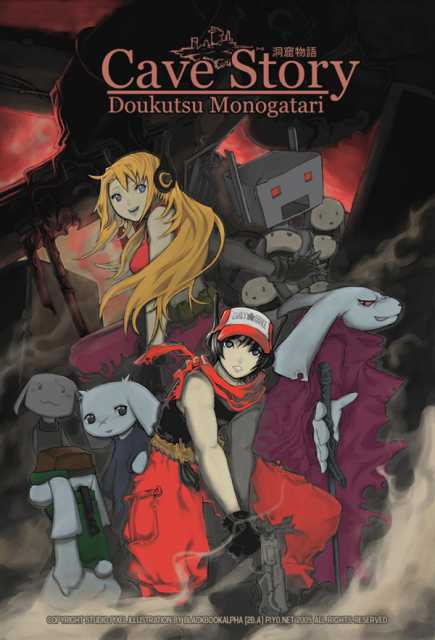
Cave Story's really only partly inspired by SpaceWhippers; it takes a few elements from the genre and then goes off the beaten path just a little. While it does have power-ups and stat boosts ensconced in the landscape and places to visit and revisit, the game's mostly a linear affair that has you teleporting off to consecutive areas to follow an ongoing story arc.
Cave Story is particularly memorable for three reasons:
- The first and most evident is how the weapons in the game work: the first thing the player does is steal a gun from a sleepy old man in order to defend himself, and it's little more than a pea-shooter. By killing enemies and avoiding damage, the gun steadily grows more powerful. In a sense, the game rewards you for keeping out of the way of enemies but doesn't punish you too severely in turn for failing to do so, as you take minimal damage (which can be quickly restored) but are momentarily weaker until you climb back up that upgrade ladder. It's a great little system and perhaps the most notable innovation (well, in this context at least, as something similar has been in shmups since forever) that the game brings to the table.
- The game was originally in Japanese and the developer had no intention of getting it localized or released in Western territories, or rather if he did it was slightly beyond the scope of a small Doujin game developer making a fun little SpaceWhipper shooter about rabbits and robots. However, its quality inspired quite a few fan translators, like Aeon Genesis, to create a translation patch so people could follow its quite elaborate story. Importantly, though, the translation allowed for the third memorable aspect...
- The game's considerable number of secrets. All good SpaceWhippers have secrets of course, but in Cave Story's case they all relate to story twists and other in-game events. There are characters that can be saved with a little extra work, for instance, as well as regions and new abilities that can be found if the player's a little attentive to sub-textual clues and NPC hints, or is just the type to probe anything suspicious for the sake of discovery. The game's entirely playable if you don't understand a word, but to get the most out of it you sort of need to understand what's going on in the world around you. In that respect, it's not unlike a certain other mysterious pixel-based game I'll feature a little bit later in this blog.
I overall didn't like Cave Story too much, perhaps because I felt cheated by the number of bridges I was burning without realizing it (I'm sorry, Curly Brace. If only I'd known). It's still a neat game and if you're not too bothered about having a graphically updated version (which doesn't add a whole lot), you can find it for free on the internet easily enough.
An Untitled Story (2007-08-26)

Another trailblazer in what would become a valid market (read: Indie developers will actually start to get their stuff sold on Steam and other places), An Untitled Story is a very rough looking SpaceWhipper from one Matt Thorsen, who is himself something of a prolific name in the pre-big Indie renaissance era and beyond. He created the simple yet fun Jumper series, one of many games name-checked by Super Meat Boy via an unlockable character, and the intensely tricky platformer MoneySeize, which might well have been Thorsen returning the favor to Team Meat. Most recently, Thorsen made the Ouya hit (which aren't two words you often see together thus far into the system's tenure) TowerFall - one of a wave of really cool local multiplayer games we've been seeing of late. Along similar lines, I kind of want the Giant Bomb crew to check out something called Starwhal for the next UPF, but I'm digressing really hard right now you guys.
Back to An Untitled Story. Like Cave Story, it's completely free on its developer's site, and while it's graphically not the most intense visual experience you'll ever sigh in wonder at, it ticks off all the correct boxes for a SpaceWhipper: There's power-ups to collect in out-of-the-way places, you explore more of the map as you grow stronger and earn new abilities and there's a giant map with many interconnected regions to go explore once you feel like you can survive them. Thorsen definitely did his homework, though I have to say it's probably the hardest game on this list to complete. I'm not sure I ever reached its conclusion.
Aquaria (2007-12-07)
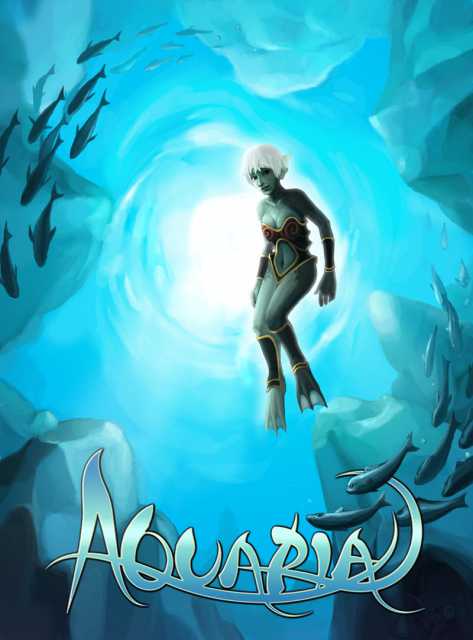
Aquaria perhaps set the template for the Indie SpaceWhipper, in how it has some glorious art and sound design but the actual core tenets of the genre are understandably a little bit diminished due to the smaller development team. That development team does include Derek Yu, however, he of the compelling yet entirely unfair Spelunky. Aquaria doesn't quite share the challenge level of her little brother, but it's still got an array of tough boss fights and clever little touches that it takes a while to discover.
The most notable thing about Aquaria is that it's a SpaceWhipper that lacks platforming of any kind. As with another entry on this list (the one about maddeningly entangled dark globes, up next) the protagonist is free-floating throughout the entire game. This doesn't eliminate instances where you have to make your way through rooms filled with traps and obstacles, or most of the other challenges often posed by platformer games, but it does mean that you don't have to worry about gravity nearly as much.
Aquaria's also impressively big, given its small team. While the whole "barriers and power-ups" dynamic is a little threadbare, the game makes up for it with its oodles of aquatic beauty and a really intriguing plot about a forgotten Cthulhu-esque deity at the bottom of the ocean and its influence on the annihilation of innumerable underwater civilizations, most of which left ruins behind for the protagonist Naija to stumble across. A good SpaceWhipper needs a good mystery behind it to spur the exploration, and Aquaria is no slouch in that regard.
Outland (2011-04-27)
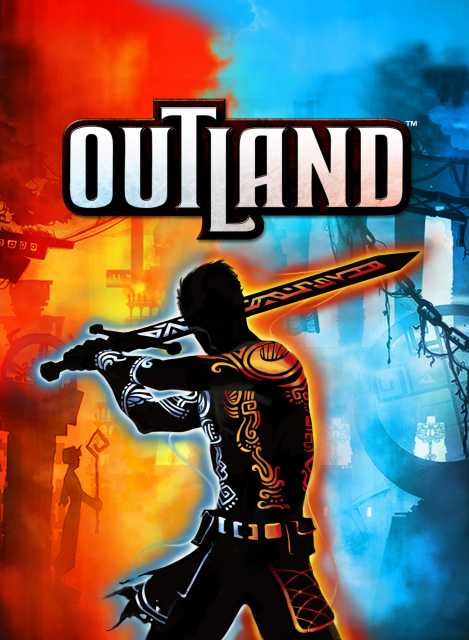
I'm sure there were more SpaceWhippers from the Indie community between 2007 and 2011, but I'll be darned if I can recall any. Maybe they took a break to collect themselves, possibly across a wide area with a variety of power-ups, because they would come back in force and then some over the next couple of years. If you haven't noticed yet, each one of these Indie SpaceWhippers tries to add their own twist to the Metroid blueprint. In XBLA/PSN hit Outland's case, we have a polarity-switching gimmick akin to Treasure's Ikaruga, where switching one's color from orange to blue and vice versa allows you to damage certain enemies or progress through similarly-colored barriers. Often these switches require split second timing, and so Outland is a curious amalgamation of a SpaceWhipper and a bullet hell shooter. It's not quite as severe as most bullet hell games, but Outland isn't shy about throwing out waves of enemy projectiles to weave yourself through. Its inspirations are apparent, but it's ultimately a unique combination of genres.
It probably doesn't deserve to work as well as it does. Rather than a deeper emphasis on combat, the game derives its challenging encounters from the player's ability to switch their color palette on the fly, and many of the game's more difficult instances come from getting to grips on the necessary timing. It's still also every bit a classic SpaceWhipper, with open-ended areas to explore once the requisite yadda yadda yadda. You've heard me explain what goes into a SpaceWhipper often enough now, so take it as read that Outland follows most of the basic rules for one. Or take it as orange. Or blue.
Insanely Twisted Shadow Planet (2011-08-03)
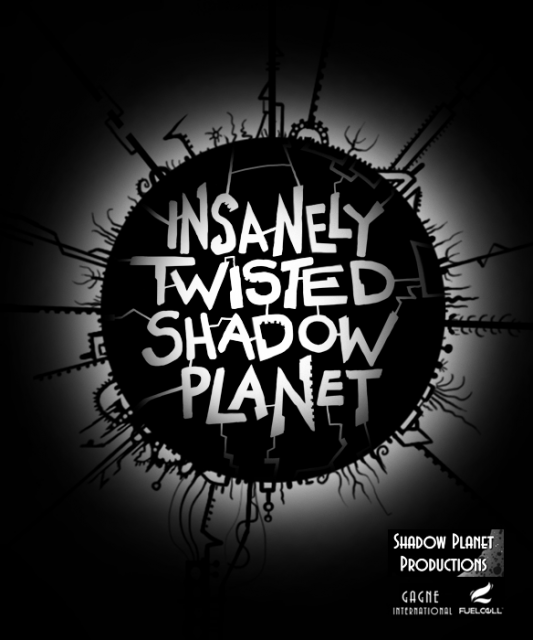
Insanely Twisted Shadow Planet isn't perhaps the Indiest of Indie SpaceWhippers, since it apparently took two whole development studios to put together, but its Henry Selick-esque sci-fi shoot 'em up has an eclectic mix of genres that provide something that, like many games on this list, wasn't something you saw a whole lot full stop, let alone from major studios and publishers who are generally already too scared of their own shadow planets to make something this eccentric.
ITSP bucks the SpaceWhipper trend in many meaningful ways but is still the same genre deep down: paths are blocked until the necessary power-up is found, room-based instances of enemies or puzzles need to be cleared before more areas become accessible and you grow stronger by poking around every nook and cranny for upgrades. Sure, you float around and shoot stuff in your dinky UFO, but it felt like the setting of this game was your oyster the moment you were dumped into it. A dark and foreboding oyster, perhaps, but one that compelled you to dig deeper into its secrets.
I guess I can't really move on without talking about the Lantern Run either. While a considerable departure from the measured pace of the main game, the Lantern Run offered something akin to a multiplayer co-op version of the self-destruct escape that usually punctuates any of Samus's adventures like a big exclamation point. Girlfriend can't help but blow up any planet or space station she happens upon, whether it was an inadvertent happenstance or deliberate sabotage. The Lantern Run has become infamous on Giant Bomb for many reasons, largely because we frequently saw everyone involved in the multiple failed attempts at their most raw (and let's not fill the comments discussing that one particular unfortunate instance. I am a mod now, please recall).
Unepic (2011-09-30)
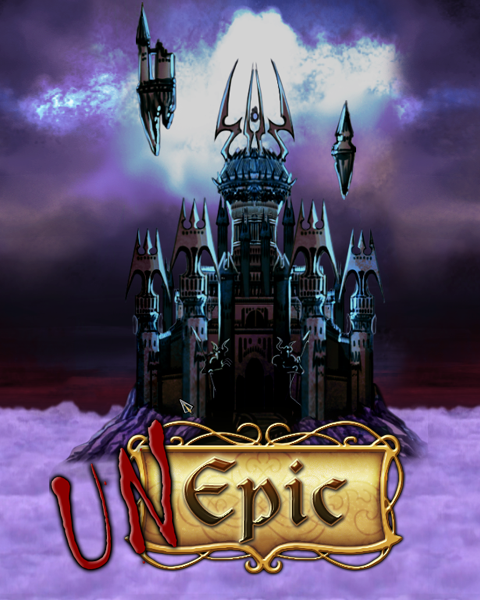
Unepic's humor is atrocious. You might wonder why I would lead my discussion of this SpaceWhipper with a scarcely relevant knock against its comedy, but it's really the first thing that hits you when playing the game. It has some of the worst referential humor and gross comedic sexual politics of any interactive product I've played this side of a Postal game. It's a shame, because it serves to overshadow many of the game's finer qualities.
Those finer qualities tend to include how impressively expansive the game is, and how each screen is comprised of multiple corridors filled with traps and monsters and treasures. It feels like a colossally-scaled dungeoncrawl adventure, almost like a 2D platformer version of a roguelike (an actual one, like NetHack) in which there's crafting, spell management, armor and weapons, leveling and skills, vendors to purchase some or all of the above from and plenty of disparate locations within the castle to explore. It's a game packed to the gills with features and content, and there's plenty to explore and backtrack to as you grow more powerful.
However, the game sort of peters out like a damp squib towards the end. The final "boss" is a juxtaposition of a speedrun through a tricky forest stage while simultaneously holding off an invasion using summoned creatures in a manner not unlike the tower defense that I despise so much - the goal being to juggle the two modes, making progress through the first while ensuring that you don't lose control in the latter. The worst part is that there's nothing to prepare you for any of this, beyond making sure you're as overpowered as possible by fully exploring the rest of the game for the best gear and spells. No strategy elements existed up until this point, and because this is the final obstacle of the game it's also the most difficult sequence of the game. Were there a bit more a build-up, say with a few similar instances, I might even say it was possible to do without frustrating oneself to the point of quitting. Figures that a game with a bad first impression would end on a similarly sour note.
Fez (2012-04-13)
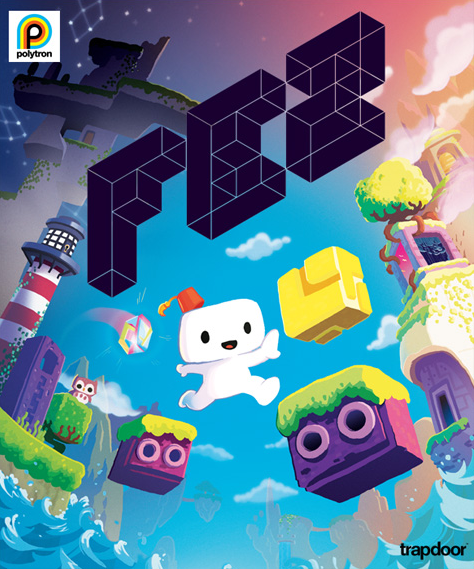
Polytron's pixelly SpaceWhipper is something of a wolf in sheep's clothing. Fez is ostensibly a collect-a-thon, with the be-hatted protagonist Gomez running around collecting golden cubes via his ability to shift his perspective of the world around him by 90 degrees. Twisting what seems to be a 2D map around on its axis leads to all sorts of discoveries, and in some ways feels like the next logical step after Paper Mario's various methods on turning a 2D platformer made in a 3D era on its head. Or at least around its head. You know what I mean.
Obviously, or perhaps unobviously, Fez isn't all it appears to be on the surface. Hell, you learn this quickly enough by shifting Gomez's village around and seeing what lurks on the previously hidden sides. Fez's true depth as a game filled with hidden cryptograms and nebulously defined mechanics come to the fore once the discovery of the first "anti-cube" is made. From there, the player either continues hunting for the golden cubes - which is rarely as difficult as finding a new area and exploring it thoroughly - or going hunting for these elusive darker cubes, understanding the tricks to coaxing them out from their hidey holes via hitting some combination of directions hinted at by an ideogram or some other meta-puzzle. It's not uncommon, from what I've both heard and experienced first-hand, to end up with entire sheets of notepad paper filled with notes and observations. The effect has been diminished in the years after the game, now that full documentation on all its secrets can be found across the internet, but it's one of those cases - like a new Souls game - where being in on the ground floor does wonders for the game's appeal.
Hell, it's still great fun today. If you're a fan of games that employ logic puzzles - the type that you have to write down and think through, rather than the usual adventure game "use everything on everything else" spiel or most Indie puzzle games' insistence on moving boxes around - then Fez is worth a look into. Cut yourself off from any guides if you want to make the most out of the experience.
Dust: An Elysian Tail (2012-08-15)
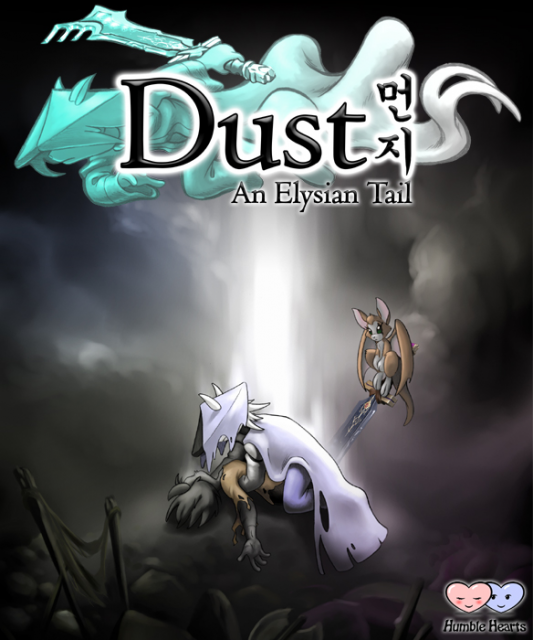
Dust: An Elysian Tail was created by a single game designer - Dean Dodrill - over a number of tense years when he was struggling to make ends meet while also ensuring he had as much time as possible to work on his dream project. The amount of blood and tears put into Dust really shows, with its numerous novel features and carefully crafted presentation. The game melds a combo and juggle-rich combat system with the standard SpaceWhipper exploration, but does so in a manner where the alacrity of your character and the way he whizzes through the air is as conducive to getting through areas quickly as it is to pounding enemies in a satisfying manner. The game moves along at a pleasingly brisk pace as a result, but still has an impressive amount of content stretched across various nodes that the player can access from a world map, not unlike Order of Ecclesia or Metroid Prime 3.
I don't mean to keep harping on this game. I did rate it pretty highly on my 2012 GOTY list (spoilers: it came second), so its worth the accolades. Though it's hard to pick a singular favorite on this list of SpaceWhippers - as I've stated previously, they each feel very different due to the novel spins they introduce to the genre - I think I'd be safe in saying that Dust is my overall top preference. Don't be put off by its "furry agenda"; the game is a very solid SpaceWhipper and it really takes a playthrough of your own for the true depth of quality to become apparent. I can all but guarantee that twirling through the air and spitting out dozens of projectiles with the combination attacks never gets old.
Hell Yeah! Wrath of the Dead Rabbit (2012-09-25)
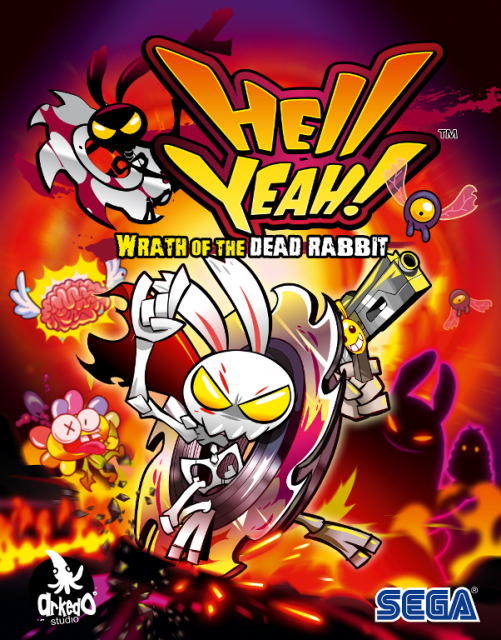
Hell Yeah! is an odd duck, or rabbit, because it chose as its inspiration perhaps the most forgotten Metroid game of them all: that of the Game Boy sequel Return of Samus. The chief goal, rather than simply progressing through to an area's boss and procuring a new power-up (though this is definitely still a secondary concern), is to scour the area thoroughly for a series of monsters to destroy. The game's humorous introduction puts Ash, the eponymous Dead Rabbit, on something of a tear against all those who oppose him, or at least dare to embarrass him by talking smack about his rubber ducky. He's nothing short of a logomorph Laharl from Disgaea, proving his worth against the other vile creatures of the underworld through might and intimidation.
Having the focus switch from finding the boss to finding every critical target on the map changes the player's priorities to more overtly exploration-based goals. Rather than choosing to chase optional objectives by leaving the beaten path, it's now become the chief intent. New areas don't open up until Ash has slain a specific number of creatures, and because most of the game's power-ups need to be purchased there's little reason not to look everywhere for resources. It's not a system most SpaceWhippers opt to build their games around, but works in Hell Yeah's favor due to the amount of humorous content there is to be found with his many, many nemeses.
But sure, Hell Yeah! has its issues as well. The game's pretty lousy about checkpointing and I bumped into a few bugs here and there too. It gets a bit more frustrating as you head through tougher areas and need to deal with its few foibles even more frequently. Still, though, I highly recommend the game for its bizarre sense of style and humor if nothing else. You even get to put all the monsters you've killed to work on making you stronger! I can say with full impunity that Samus never thought to do that with all those dead Omega Metroids.
Knytt Underground (2012-12-18)
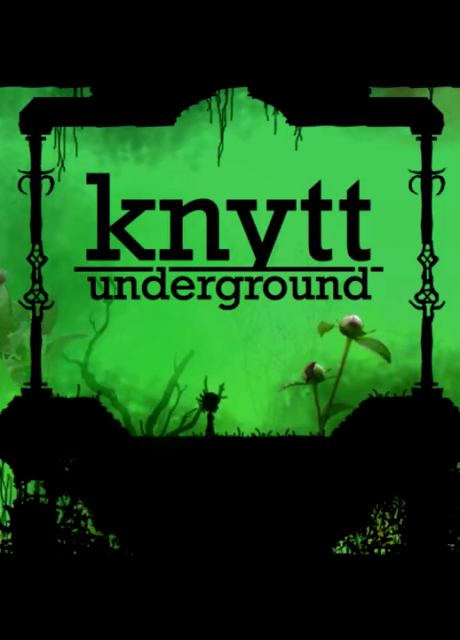
Knytt Underground is actually the last in a long run of Indie SpaceWhippers from Swedish developer Nifflas, though it's also his most fully fleshed-out and currently the only Knytt game on which he has put a price tag. Knytt Underground sets itself apart in two major ways: the first is the sheer size of the game. The world map is an enormous 30x48 square grid, which each of those squares being its own screen. That's 1440 screens total, for the mathematically disinclined. Of all the SpaceWhippers I've ever played, and there's a been a lot, none of them took me quite as long to complete as Knytt Underground. Not even Portrait of Ruin, with its absurd number of different painting sub-worlds combined with its already substantial main castle map.
The second notable aspect is Knytt's utter lack of combat. The game has something of a pacifistic streak in that regard, and neither you nor your fairy familiars have much in the way of defending themselves. Rather, the parts of Knytt Underground which are more overtly a video game instead set up puzzle-platforming instances where you need to use your wits, jumping ability and the game's uncommonly complex physics engine to get around elaborate traps. Most of these involve turning into a ball (which, in and of itself, isn't exactly unusual to SpaceWhippers) and using the gravity and momentum of an area to carry you past danger. Failure or death leads to being dropped off at the entrance of the area, rather than anything too permanent.
You might think with a lack of a health system or any consumables or equipment, since those would only strictly be necessary if you were fighting incrementally tougher monsters, that there wouldn't be a strong enough reason to explore a map this vast. The game is not lacking for stuff to find, though, whether they be quest items, trinkets or story-important valuables. There's definitely enough here to keep a SpaceWhipper enthusiast glued to the screen for hours. I've reviewed it in more detail here, if you need any further prompting from me to go check it out.
Guacamelee (2013-04-09)
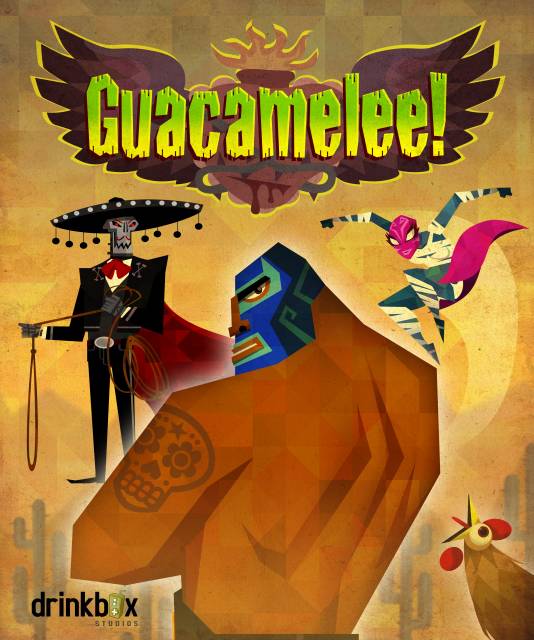
I was fairly mixed on Guacamelee. I loved its presentational style, its whole mariachi and Lucha Libre world of vibrant colors and Mexican soul. Like Grim Fandango, it really takes those tenets and crafts an interesting (if a little generic in Guacamelee's case) adventure around them, rather than focus directly on their novelty too much. Its combat can also be quite fun, with the various moves the hero Juan (or alternate choice Tostada, if you were like me) learned doubling as both an extension of the combo and juggle heavy combat system that recalled Dust: An Elysian Tail and as a means of reaching new areas through previously indestructible barriers.
The game was also rather kind on the SpaceWhipper side of things, perhaps to the point of being overly simplistic: every barrier in the game is color-coded, and these colors are displayed on the game's map, so you would instantly know which areas were now accessible after collecting a new wrestling move and breaking your first red, blue, green or whatever colored tutorial barrier. That's not to say that the game isn't a bit sneakier with some of its other hidden treasures, but it also doesn't want you to go out of your way to make notes or remember that there was a power-up you couldn't reach and ought to come back for eventually.
Conversely, the game was very adamant that you mastered its elaborate combat as soon as possible, because the bosses steadily ramped up in difficulty and, perhaps more annoyingly, switched from cases where you could figure out the boss pattern and defeat them using what you had learned to bosses that required split-second reactions and a lot of skill. I don't mind a challenge that required pure skill - hell, I'm as much a fan of Dark Souls as anyone - but to drop a boss as insidiously tough as Javier Jaguar on a player when they'd been stumbling through the game on a gentle difficulty curve up until that point seemed a tad harsh. Some challenge inconsistency issues aside, though, Guacamelee is a wonderfully conceived SpaceWhipper with a fun combat engine and many convenient outs for players who perhaps don't appreciate too much backtracking and note-taking in their SpaceWhipper adventures. It looks and sounds great too, its dumb internet meme references notwithstanding. Hey, they included a reference to Giant Bomb, so I ain't buggin'.
Valdis Story: Abyssal City (2013-09-08)
So now we come full circle to Valdis Story. It's not a bad game by any stretch: as with Guacamelee and Dust, it's clear a lot of thought was put into its combat engine, even if it's not quite as complex in that regard as those two games. It's got plenty of RPG elements, looks and sounds great with its Skullgirls'-esque quality animation and over-the-top "anime metal" soundtrack and it certainly isn't lacking for places to see and quests to complete.
It all feels a bit too much like the development team had bitten off more than they could chew. A successful Kickstarter project, it's clear that the scope of the project grew exponentially as it surpassed its goal, and the stretch-marks can often be all too apparent. Typos and minor bugs are rife in the game, and some elements feel a little half-baked, as if the game spent a bit too long in development and rushed through quality control to appease its many backers as soon as possible. Kickstarter's often been criticized for being too kind on its project creators and in turn being insufficient in looking out for the many gullible but idealistic sponsors that want to put their money towards something that sounds far peachier than it often ends up becoming, but so rarely does one consider the extra strain even successful projects puts on developers who ask for the crowdsourcing. As more money flows in and additional stretch goals are provided to compensate, the project can become a juggernaut too big for a small team to deal with. I feel that's possibly what happened here.
Valdis Story isn't a complete write-off, of course. As I said in the first paragraph, there's many positive factors to the game which make it worthy of your time. I just hope people take its lessons to heart about how wildly successful Kickstarters can lead to unconsciously bullying developers into going above and beyond to a potentially detrimental degree. Sometimes too much is too much. Actually, I believe that's always the case. Logical statements are logical.
The End!
So that was a hell of a lot of SpaceWhippers to get through. I kept adding to the list I had as I recalled more and more of them, but this is still really only the tip of the iceberg. It's a testament to the lasting appeal of Metroid and Castlevania that even though those two series have either dried up entirely or gone in an unfortunate God of War direction, there's still so many proponents out there building and buying these games that it's almost an industry in and of itself. I can't wait to see what games like Chasm, La-Mulana 2, A.N.N.E., Axiom Verge and the Strider remake do to keep this relatively obscure sub-genre reinvigorated.
All hail the SpaceWhipper! And now you never have to read that word again. Isn't that wonderful?
